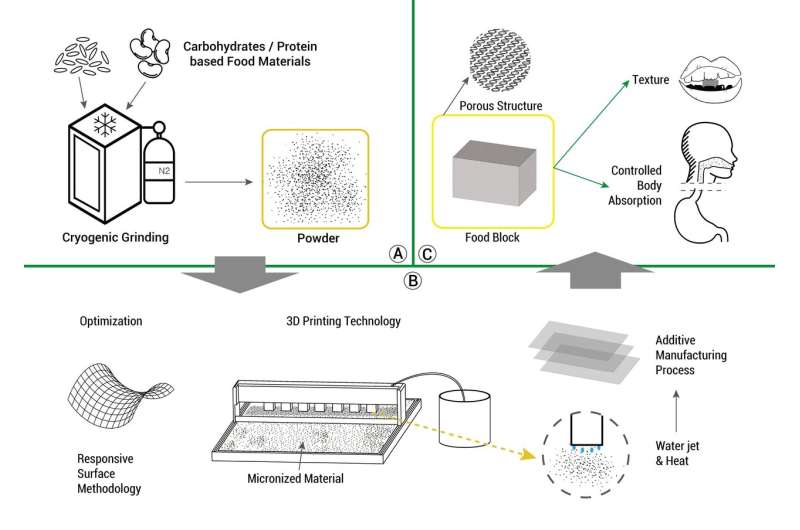3-D printed food could change how we eat

Imagine a home appliance that, at the push of a button, turns powdered ingredients into food that meets the individual nutrition requirements of each household member. Although it may seem like something from science fiction, new research aimed at using 3-D printing to create customized food could one day make this a reality.
Jin-Kyu Rhee, associate professor at Ewha Womans University in South Korea, will discuss his new research and the potential of 3-D printing technology for food production at the American Society for Biochemistry and Molecular Biology annual meeting during the 2018 Experimental Biology meeting to be held April 21-25 in San Diego.
"We built a platform that uses 3-D printing to create food microstructures that allow food texture and body absorption to be customized on a personal level," said Rhee. "We think that one day, people could have cartridges that contain powdered versions of various ingredients that would be put together using 3-D printing and cooked according to the user's needs or preferences."
3-D printing of food works much like 3-D printing of other materials in that layers of raw material are deposited to build up a final product. In addition to offering customized food options, the ability to 3-D print food at home or on an industrial scale could greatly reduce food waste and the cost involved with storage and transportation. It might also help meet the rapidly increasing food needs of a growing world population.
For the new study, the researchers used a prototype 3-D printer to create food with microstructures that replicated the physical properties and nanoscale texture they observed in actual food samples. They also demonstrated that their platform and optimized methods can turn carbohydrate and protein powers into food with microstructures that can be tuned to control food texture and how the food is absorbed by the body.
"We are only in early stages, but we believe our research will move 3-D food printing to the next level," said Rhee. "We are continuing to optimize our 3-D print technology to create customized food materials and products that exhibit longer storage times and enhanced functionality in terms of body absorption."
More information: Jin-Kyu Rhee will present the research from 12:45-1:30 p.m. Tuesday, April 24, in Exhibit Halls A-D, San Diego Convention Center (poster B284 801.9) (abstract).
Provided by Experimental Biology 2018



















